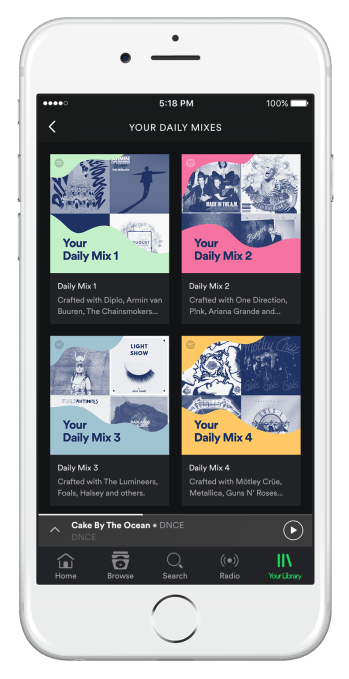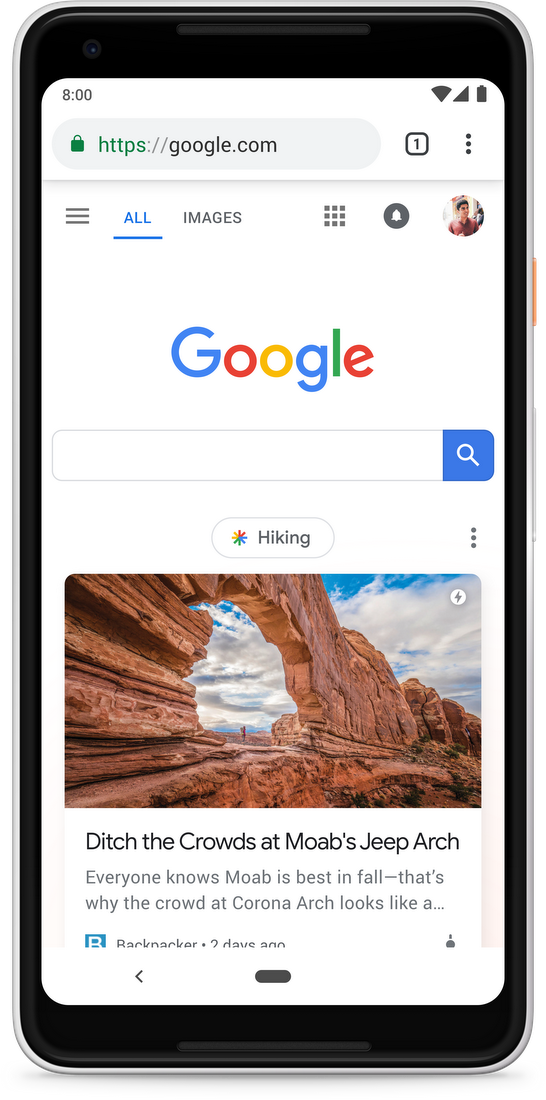

The promise and perils of content personalisation

A personalised experience is great, but it’s a fine line between cool and creepy.
These days, content personalisation is taking on a whole new level.
More than just addressing customers by their first name, brands and marketers are trying offer a unique and distinct user experience for every individual that interacts with their brand — based on specific demographic information such as gender, age, sex, location, purchase history, or even their preferences.
Thanks to machine learning and AI, all this data can then be analysed to help you create buyer personas, including psychographic segmentation. That’s where things get more sophisticated — this is the ‘why’ of how a person behaves. And hyper personalisation is when you layer demographic and psychographic segmentation to a database to really understand customer intent.
It’s promising: 91% of consumers are more likely to shop with companies offering personalised offers and recommendations. In fact, retail brands who offer a personalised e-commerce experience have been demonstrated to enjoy a 300% ROI .
At the same time, data collection has been a pretty touchy subject these days especially with the lack of transparency as to how some of this information is obtained.
The ins and outs of data-collection
As marketers, you can gain data by collecting it yourself, which is referred to as first-party data. That’s where your brand obtains customer information through sources such as customer behaviour on your website, social media, surveys or behaviour as customers.
Second-party data, as the name suggests, is basically someone else’s first-party data. And if you partner with data aggregator companies such as Nielsen or Lotame to gain customers’ data, that’s third party data.
But with all the privacy regulations and changes coming, first party data is becoming more important for marketers than third party data.
Regardless of how you obtain that data, privacy and security should be the top priority, not misusing the data given or sharing it with unauthorised personnel.
Here are some ideas on how data has been used to personalise content:
1. Personalised video and audio content
As the pandemic shows no signs of slowing down due to emerging new variants, the popularity of audio and video streaming services have skyrocketed. Netflix and Disney stocks have weathered the pandemic due to their video on demand (VOD) services. Even consumption of Spotify’s podcasts has doubled.
To keep audiences hooked, these companies utilise various technologies, such as Big Data analytics, artificial intelligence, and machine learning to analyse users’ habits and recommend shows or songs from a similar genre. Spotify, for instance, has a Daily Mix and Discover Weekly playlist full of songs that are specially curated for each consumer.
Streaming services often have “For You” or a recommendations tab that allows users to find shows that they might find interesting. YouTube often suggests videos based on what type of videos you like to watch with the phrase “Recommended for You” next to the potential video.
These days, personalised video services are being used by brands such as Barclays, Toyota, and Adidas to create personalised video for each user by leveraging first-party data, meaning that their privacy is protected and not shared with others.
During the 2018 Boston Marathon event, each runner got a personalised video showcasing snapshots of their run, finish times, and congratulatory words once they were done.
2. Personalised news feeds
If we think about it, the parallels are there: instead of having a print edition delivered to your doorstep, technology has enabled news to be delivered to your smartphone.
With big data, it goes a step further — now news feeds are suggesting articles that you might be interested in based on your search history.
In 2018, Google launched the Discover feature for Android users. Users can scroll through news and content without even searching for them — aligned with the tagline of “Discover new information and inspiration with Search, no query required.”
Aside from that, users can also choose to get notifications about a particular topic on their Google settings. For example, if you are a Roger Federer fan, you could set up notifications about him so that you will get notified when he participates in matches and check his scores in real-time.
It is not only limited to Android or Google users only; a similar feature is also available via the Apple+ News for Apple users. The Discover mode on Google is also available for Apple users if they opted to download the Google app on the App store.
But at the same time, the dark side looms. The recent Ivermectin medical conspiracy is a prime example. If you’ve fallen into the rabbit hole reading false information about how the horse dewormer is a miracle cure against COVID-19, it’s hard to get out. Since these algorithms are designed to show users more of what they want to see based on their past searches, it’s no surprise how such personal browsing data can be hijacked to attract readers based on biases.
The bigger danger is that it creates a filter bubble with news, where people will stick to their own beliefs with no common ground or the basis of truth.
Speaking in an interview with Quartz, as reported on Yahoo Finance, Bill Gates stresses the danger of how social media allows users to “go off with like-minded people, so [they’re] not mixing and sharing and understanding other points of view.”
3. Personalised web pages
Convenience and attention to detail is key when it comes to personalised web pages.
Have you ever paid attention to how if you visit an airline’s website from Singapore, the ‘from’ field for booking a flight is automatically set to Singapore, and the currency is automatically set to Singaporean Dollars?
Not only that, when you login into your account, you no longer need to re-enter your username or password as it is automatically filled for you based on your previous input.
Apart from merely localising to your particular region, personalised web pages also include nifty features where e-commerce sites can place recommended items for perusal on top of the page when a returning customer visits.
4. Personalised emails
When you create an online account with brands like Adidas and Nike or e-commerce sites such as Lazada or Shopee, you voluntarily give away your personal information to them in the forms that you fill out.
This can range from your name and birthday to your email address and even your location. This information is then used to create a personalised email that appeals to each customer, through marketing automation platforms like Mailchimp.
Starting from the subject line, you can include each customer’s name to turn mass newsletters into personalised pieces of content. Taking a step further, information like birthdays, browsing history and even location can be used to create trigger-based emails — including abandoned shopping carts prompts, birthday discount code emails, and sales reminders with items that may interest them based on their previous purchase or something that they have put on their wishlist.
If you’ve already created personas for your audience, you can customise the copy and content for each persona. That way, they’ll resonate and drive conversion based on every individual’s likes, beliefs and motivators.
Having a personalised email strategy can ultimately result in a 5-15% revenue increase, meaning a better engagement that results in a lower unsubscribe rate.
5. Personalised advertising
Are big tech companies tracking our internet behaviour? Probably. Is the FBI spying on us through our webcam? Probably not, but then again, we won’t know for sure. Like Orwell called it years ago, someone is watching you — someway or somehow.
Have you ever come across an advertisement on a web page that was related to something you Googled earlier in the day? For instance, if you are searching for new laptops to buy, chances are you will get banner ads on the sites you visited about laptops, whether it is from e-commerce sites such as Shopee and Lazada or even the laptop brand itself.
Pretty useful, but also kind of creepy. In the end, it does make you wonder what else these sites know about you.
At a House Antitrust Subcommittee hearing in 2020, as reported on TechCrunch, Google CEO Sundar Pichai claimed that the tech giant has made it “very easy for users to be in control of their data” where users “can turn ads personalization on or off,” adding on that a billion users have done so.
While it is true such a feature exists, there is no way to ascertain it works. If you look closely at the Google privacy settings, you’ll also see that ad personalisation applies across devices, which is a common practice these days. A seamless experience, but at what cost?
Even Apple announced that it wanted to give its customers greater control over whether their data (collected through apps) is shared with third parties. With more and more countries looking to pass and enforce stricter data privacy laws to protect individuals, perhaps we’ll be able to find a good balance someday.
Despite the ongoing debate, the jury is still out. Given that 83% of consumers are willing to share their data for a personalised experience, the demand still exists, which also implies content personalisation will stay — at least well into the immediate future.










